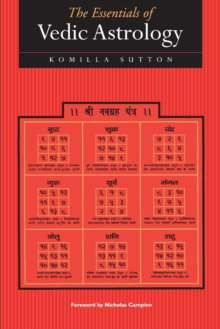For some astrologers, the most important dimension of the horoscope is the mathematical relationship between the planets, the aspects. In traditional astrology, the primary aspects are the conjunction, sextile, square, trine, and opposition. If one understands that these five aspects are based on the division of the 360º circle into five numbers, than one might find other aspects based on other numbers. The trine is based on the number three, since three trines of 120º each make the full circle. The square is based on the number 4 (four squares of 90º), and so on. Why stop at divisions of 1, 2, 3, 4, and 6? David Hamblin investigates the various divisions of the 360º horoscope and the numeric powers associated with each division in The Spirit of Numbers. The material here belongs to a purist branch of astrology known as Harmonics. After all, mathematics is a universal language.
The meanings of the signs and houses – and even the planets themselves – are creations of the human mind, while the mathematical relationships between the planets exist with or without human observation. The field of harmonic astrology was kicked off by John Addey in 1976. David Hamblin wrote a follow-up book a few years later, and now has a lot more to say on the subject in The Spirit of Numbers. Originally, Addey investigated divisions of the circle for the first ten primary numbers using harmonic charts. In this way, obscure planetary aspects, like the quintile, would show up as conjunctions in the fifth-harmonic chart. Hamblin’s approach is to do away with these numerous harmonic charts because they were confusing and not easy to translate back into the 360º horoscope. He uses a simple notation which describes the harmonic connection between two or more planets. And while Addey was content to describe the primary numbers up to ten, now Hamblin investigates all the prime numbers up to 32. Each chapter of The Spirit of Numbers covers a specific prime number. He begins with what qualities the number has, whether it’s feminine or masculine, how it fits in with the numbers that came before it, and how its shape or essence can be equated to human traits. Each chapter then gives perhaps a dozen celebrity examples to show how the number manifests in their lives, and how it describes their basic character. For example, the septile (one-seventh of the circle) is examined in the chapter called “Sevenness.” The number seven is the first truly irrational number since it doesn’t fit into the decimal system very neatly at all. Unlike the previous numbers, when dividing this prime number into one, the result is a long string of seemingly random numbers: 0.142857142.… The next primary number that has this quality is thirteen, but it has a sinister reputation while seven seems more benign. So seven is magical, mystical and mysterious. The issue of whether something really exists frequently comes up with sevenness, like UFOs, faeries, or angels. This number prompts us to find the divine in ordinary existence. The best example of sevenness that the author could find is in the chart of spiritual teacher Alice Bailey. She had her Moon, Venus, Mars, Saturn, Uranus and Neptune all linked by sevenness (septiles). Note that the Sun is not involved with these interconnections. Alice Bailey used words like “esoteric,” “occult,” and “arcane” to describe her work, which involved transmitting cosmic knowledge to mankind. With the Moon linked to all this sevenness, she received sevenness knowledge. She was able to pass it on through her Sun personality, living as an ordinary human. Other sevenness personalities described in this chapter include novelist Herman Melville, tennis pro Roger Federer, and composer Hector Berlioz. By chapter 16, thirty-oneness is the topic. Examples illustrating the complexities of the human mind associated with this number include Sigmund Freud, Marquis de Sade, and Carol Burnett. The concluding chapters summarize each of the prime numbers, show how to interpret the whole chart, and then add some philosophical musings on the nature of astrology.
After reading this well-researched and deeply thought out book, one will undoubtedly have a greater respect for the unique qualities associated with numbers.

 Book of World Horoscopes
Book of World Horoscopes 


